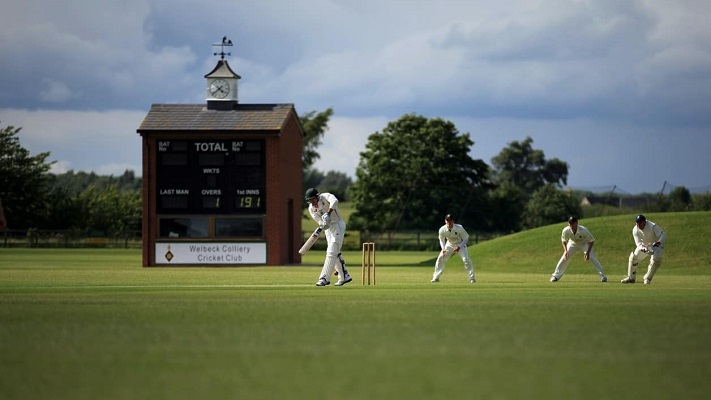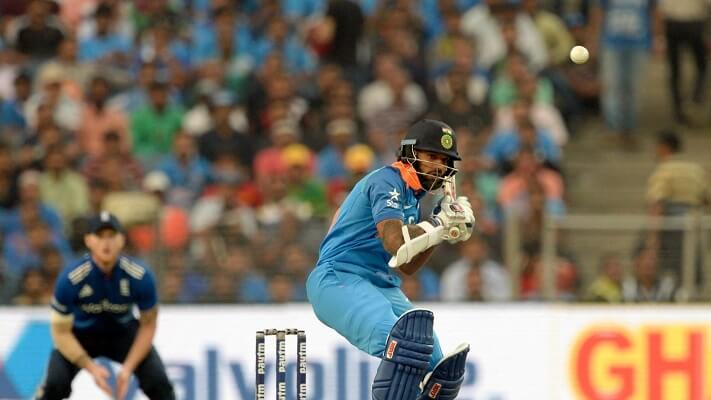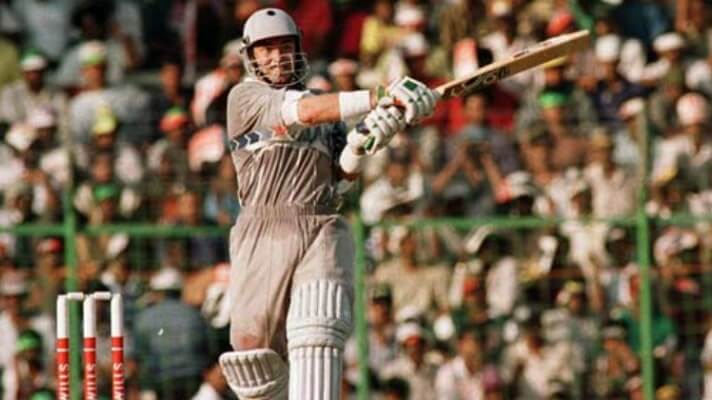|
Listen to this article
|
Cricket, often referred to as the “gentleman’s game,” is a sport steeped in tradition and complexity. To the uninitiated, the array of rules and terminology can seem bewildering, but fear not, for we’re here to unravel one of the more straightforward but crucial aspects of cricket: the wide ball. 4rabet cricket betting — find your best option!
What Is Wide Ball In Cricket
So, what exactly is a wide ball in cricket? In the world of cricket, a wide ball meaning a delivery bowled by the bowler that is deemed to be too wide of the batsman’s reach, making it challenging for them to play a shot. It’s almost as if the ball has taken an extravagant detour away from the batsman’s territory, outside the line of the stumps. Picture this: the bowler releases the ball, and instead of heading straight towards the stumps, it veers too far to the left or right, outside the “corridor of uncertainty.” The batsman, unable to make a reasonable attempt to hit the ball, watches it sail past harmlessly.
This rule exists to maintain a fair balance between bat and ball. After all, cricket is known for its beautiful contest between the bowler and batsman, and a delivery that is too wide would tilt the scales unfairly in favor of the bowler. So, to prevent bowlers from exploiting this advantage, wide balls are penalized.
In most forms of cricket, such as Test matches, One Day Internationals (ODIs), and Twenty20 (T20) matches, when a bowler sends down a wide ball, the batting team is awarded an extra run. This is added to their total score, and the batsmen do not need to attempt to play a shot. In shorter formats like ODIs and T20s, wide balls can prove costly for the bowling side, as they can result in multiple runs being added to the opposition’s score.

In addition to the extra run, a wide ball also comes with a bonus delivery. This means that the bowler must bowl an extra ball in that over to make up for the wide. It serves as a deterrent against bowlers deliberately bowling wide to prevent the batsman from scoring.
While wide balls might be seen as a minor inconvenience, they often lead to fascinating tactical battles within the game. Batsmen try to manipulate the bowler into delivering wides, while bowlers aim to maintain a fine line between being aggressive and avoiding wide deliveries. It’s a delicate dance of skill and strategy.
In summary, the wide ball is a critical aspect of cricket, ensuring fairness and excitement in the game. It’s not just a momentary pause in the action. It’s a reminder of cricket’s commitment to balance and the enduring contest between bat and ball. So, the next time you’re watching a cricket match and see the umpire signal a wide, remember that it’s not just a simple deviation from the norm; it’s a crucial part of what makes cricket the sport we all love.
Wide Ball In Test Cricket
In Test cricket, a wide ball is defined in a similar way to how it is in other formats of the game, such as One Day Internationals (ODIs) and Twenty20 (T20) matches. However, there are some slight differences in how wides are treated in Test cricket compared to limited-overs formats.

In Test cricket, a wide ball is a delivery bowled by the bowler that is deemed to be too wide of the batsman’s reach, making it difficult for them to play a shot. It’s a delivery that passes outside the marked crease, which is typically about 8 feet (2.44 meters) wide, and outside the line of the batsman’s stumps. The specific guidelines for what constitutes a wide ball are set by the International Cricket Council (ICC) and are consistent across all formats of the game.
When a bowler in Test cricket bowls a wide ball, there are a few key points to note:
| Aspect | Definition and Details |
|---|---|
| What is a Wide Ball? | A delivery bowled by the bowler that is too wide of the batsman’s reach, outside the line of the stumps and the marked crease (approximately 8 feet wide). |
| Awarded Runs | The batting team is awarded one extra run, added to their total score. |
| Batsman’s Response | The batsman does not need to attempt to play a shot at a wide ball. |
| Bonus Delivery | Unlike limited-overs formats, there is no bonus delivery added to the over in Test cricket. The over continues with the next legitimate delivery. |
| Impact in Test Cricket | While wides have an impact, they are generally less significant compared to limited-overs formats due to the longer duration of Test matches. |
| Purpose | To ensure fairness and prevent bowlers from exploiting wide deliveries as a means to avoid the batsman’s scoring opportunities. |
While wides in Test cricket may not have the same immediate impact as they do in limited-overs cricket, they still serve the purpose of ensuring that the bowler maintains a fair line and length, preventing them from exploiting wide deliveries as a means to avoid the batsman’s scoring opportunities.

In summary, a wide ball in Test cricket is a delivery bowled by the bowler that is too wide of the batsman’s reach, resulting in an extra run for the batting team but no additional delivery. It is a rule designed to maintain fairness and balance in the longest format of the game, where the battle between bat and ball is often a prolonged and fascinating contest.
Wide Ball In Cricket Rules
Wide ball rules in cricket are designed to ensure fairness in the contest between batsmen and bowlers. Here are some key points about the rules governing wide balls in cricket:
| Rule Aspect | Description and Details |
|---|---|
| Definition of a Wide Ball | A delivery bowled by the bowler that is too wide of the batsman’s reach, outside the line of the stumps, and outside a marked crease (usually around 8 feet or 2.44 meters wide). |
| Umpire’s Discretion | The decision to call a delivery as a wide ball is at the discretion of the on-field umpire, considering whether the batsman had a reasonable opportunity to play a shot. |
| Scoring a Run | When a bowler bowls a wide ball, the batting team is awarded one extra run, added to the team’s total score. |
| No Need to Play a Shot | The batsman is not required to make an attempt to play a shot at a wide delivery; they often let it go by without trying to make contact. |
| Extras Column | The extra run awarded for a wide ball is recorded in the “extras” column of the batting team’s scorecard, which includes all runs scored by means other than the batsman’s shot. |
| Retaking the Delivery | After a wide ball is called, the bowler must re-bowl the delivery. The extra run is added to the batting team’s score, and the next ball is bowled without any additional penalty. |
| Wide Ball Line | In limited-overs cricket, there is often a specific guideline for the maximum width a ball can be bowled. If the ball crosses this predetermined line, it is called a wide. |
| Tactics and Strategy | Bowlers and teams may use wide deliveries strategically to control the flow of runs or set up fielding arrangements. |
| Over-Rate Penalty | In some formats, consistent wides can affect the team’s over-rate, potentially leading to penalties for slow overrates. |
| Appeals and Review | Teams can appeal to the umpire if they believe a delivery should be called wide, but there are no specific reviews for wide balls. |
Wide ball rules help maintain a balance between bat and ball in cricket, ensuring that bowlers do not gain an unfair advantage by consistently bowling deliveries that are too wide for the batsman to play.

These rules are consistent across various formats of the game, including Test matches, One Day Internationals (ODIs), and Twenty20 (T20) matches, although there may be slight variations in specific regulations depending on the cricket board and tournament rules.
Remarkable Wide Ball Records
In the annals of international cricket, there exist some astonishing records pertaining to wide balls that have etched their names in the sport’s history. These records, marked by their uniqueness, have left a lasting impression on the cricketing world.
- Mohammed Sami’s Flurry: A singular over in a one-day international match witnessed the extraordinary feat of Mohammed Sami, who bowled an astonishing 7 wides and 4 no-balls in a mere 17-ball over. This extraordinary display occurred during a match against Bangladesh, resulting in the Pakistani bowler conceding 22 runs during that eventful over.
- Test Match Wide Ball Extravaganza: In the realm of Test cricket, a peculiar record emerged during a dead rubber 3rd test match between England and West Indies. An astounding 35 wide balls were recorded in a single match. Shannon Gabriel of West Indies contributed significantly with 11 wides, while England’s Mark Wood and West Indies’ Keemo Paul each added 6 wides to this remarkable tally.
- Bert Vance’s Unforgettable Over: The 1989-90 Shell Trophy final witnessed an unforgettable performance by New Zealand cricketer Bert Vance. Playing for Wellington against Canterbury, Vance bowled an astonishing 22-ball over, conceding a staggering 77 runs in that single over, a record that remains firmly etched in the history of county cricket.
- Dhaka Second Division Cricket League Chaos: In the realm of club cricket, a Bangladeshi bowler named Sujon Mahmud found himself embroiled in an unprecedented incident. During a Dhaka Second Division Cricket League match between Axiom and Lalmatia, Mahmud bowled a jaw-dropping 65 wides, giving away a whopping 92 runs off just 4 balls. This astonishing display of wayward bowling was no ordinary occurrence.
- Protest Against Umpiring Errors: It later came to light that the club cricket team’s decision to embark on this unique wide ball protest was motivated by their frustration with umpiring errors. Their unconventional protest would overshadow all previous records held in recognized cricket, marking it as a moment of defiance and cricketing folklore.

| Record | Player/Team | Date | Match Format | Wides | Runs Conceded |
|---|---|---|---|---|---|
| Most Wides in a Single Over | Mohammed Sami | Not specified | One-Day International | 7 wides | 22 runs |
| Most Wides in a Single Test Match | England vs. West Indies | Not specified | Test Match | 35 wides | Not specified |
| Most Runs Conceded in an Over (County) | Bert Vance (Wellington) | 1989-90 | County Cricket | Not specified | 77 runs |
| Most Wides Conceded in a Club Cricket Match | Sujon Mahmud | Not specified | Club Cricket | 65 wides | 92 runs |
| Wide Ball Protest in Club Cricket | Unnamed Club Team | Not specified | Club Cricket | Not specified | Not specified |
These wide ball records, whether fueled by extraordinary talent or born out of protest, add a layer of intrigue and uniqueness to the sport of cricket, proving that the game is not just about conventional statistics but also about the unexpected moments that define its history.
Mohammed Sami’s Flurry
One of the most astounding Wide Ball records in cricket history is the extraordinary performance by Pakistani fast bowler Mohammed Sami. This remarkable feat occurred during a One-Day International match, where Sami bowled an astonishing 7 wides and 4 no-balls in a single 17-ball over. The cover itself was nothing short of a rollercoaster ride, as Sami’s deliveries repeatedly veered off course, confounding both the batsman and spectators. In the end, he conceded a staggering 22 runs in that solitary over, making it a moment that would be etched into the annals of cricketing lore.

What makes Mohammed Sami’s wide ball spree all the more remarkable is the sheer audacity of the performance. Seven wides in a single over is an unparalleled display of wayward bowling in the limited-overs format, and it stands as a testament to the unpredictability and drama that cricket often brings. While Sami’s record may not be one to celebrate in his career, it serves as a reminder of the unique moments that make cricket such an exhilarating and unpredictable sport, where even the best can occasionally find themselves on the wrong side of the record books.
| Record Description | Player | Date | Match Format | Wides | Runs Conceded |
|---|---|---|---|---|---|
| Mohammed Sami’s Flurry – Most Wides in a Single Over | Mohammed Sami | Not specified | One-Day International | 7 wides | 22 runs |
Test Match Wide Ball Extravaganza
The Test Match Wide Ball Extravaganza stands out as one of the most astonishing moments in the history of Test cricket. This extraordinary record was set during a dead rubber 3rd Test match between England and West Indies, where a staggering 35 wide balls were bowled in a single match. This was a testament to the immense challenges faced by the bowlers on that eventful day and the difficulty they encountered in maintaining control over their deliveries. Shannon Gabriel of West Indies played a significant role in this record, contributing a remarkable 11 wides to the tally, while England’s Mark Wood and West Indies’ Keemo Paul added 6 wides each.

What makes the Test Match Wide Ball Extravaganza so captivating is the sheer magnitude of wides bowled in a single match. It serves as a reminder that even in the longer format of the game, where bowlers are expected to be more accurate and patient, there can be moments of unpredictability and lapses in control. This record encapsulates the dynamic nature of Test cricket, where the tussle between bat and ball can take unexpected turns, leaving fans and players alike in awe of the game’s capacity for surprises.
| Record Description | Teams | Date | Test Match Format | Total Wides |
|---|---|---|---|---|
| Test Match Wide Ball Extravaganza – Most Wides in a Single Match | England vs. West Indies | Not specified | Test Match | 35 wides |
This record, set during a Test match between England and West Indies, serves as a testament to the unpredictability and challenges faced by bowlers even in the longest format of cricket. It’s a remarkable demonstration of the dynamic nature of Test cricket, where both bowlers and batsmen must adapt to changing conditions and situations.
Bert Vance’s Unforgettable Over
Bert Vance’s Unforgettable Over has become the stuff of legend in the world of county cricket. This New Zealand cricketer etched his name in the annals of the sport during the 1989-90 Shell Trophy final while representing Wellington against Canterbury. What makes this record truly remarkable is the sheer audacity of Vance’s performance in a single over.

He bowled an astonishing 22-ball over, conceding an eye-popping 77 runs in that one, unforgettable over. The batsmen on the receiving end must have felt like they were in a cricketing dream or nightmare, depending on which side of the ledger they were on. Vance’s over remains one of the most talked-about instances of wide ball extravagance in the history of cricket, showcasing the astonishing twists and turns the game can offer.
Now, let’s create a table for Bert Vance’s Unforgettable Over Record:
| Record Description | Player | Date | Match Format | Overs | Wides | Runs Conceded |
|---|---|---|---|---|---|---|
| Bert Vance’s Unforgettable Over | Bert Vance (Wellington) | 1989-90 | County Cricket | 1 | Not specified | 77 runs |
Bert Vance’s Unforgettable Over serves as a reminder that cricket, even at the professional level, can produce moments of astonishing and unprecedented brilliance, or in this case, waywardness. It remains a testament to the unpredictability and drama that makes cricket such an enduring and beloved sport.
Dhaka Second Division Cricket League Chaos
The Dhaka Second Division Cricket League Chaos is a record that has become the stuff of cricketing legend due to its sheer absurdity. In a match between Axiom and Lalmatia in the Dhaka Second Division Cricket League, Bangladeshi bowler Sujon Mahmud managed to accomplish what no other bowler had done before or since. In a single over, Mahmud bowled a mind-boggling 65 wides, conceding an astounding 92 runs off just 4 legal deliveries.

This unprecedented display of wayward bowling defies conventional understanding and remains an astonishing outlier in the world of cricket. It was later revealed that the bowling team chose to protest against umpiring errors in a unique and unprecedented manner, overshadowing all previous wide ball records and making this incident a tale of defiance and cricketing folklore.
Now, let’s create a table for the Dhaka Second Division Cricket League Chaos Record:
| Record Description | Player/Team | Date | Match Format | Wides | Runs Conceded |
|---|---|---|---|---|---|
| Dhaka Second Division Cricket League Chaos Record | Sujon Mahmud (Axiom) | Not specified | Club Cricket | 65 wides | 92 runs |
The Dhaka Second Division Cricket League Chaos remains an extraordinary and unforgettable chapter in the history of cricket, highlighting the passion and emotions that can run high in the sport. While it was an unconventional protest, this incident is a testament to the unique ways in which cricket enthusiasts can express their frustrations and concerns within the realm of this beloved sport.
Protest Against Umpiring Errors
The Protest Against Umpiring Errors is a Wide Ball record unlike any other in the history of cricket. In a display of unprecedented defiance, an unnamed club cricket team decided to use wides as a form of protest against perceived umpiring errors that had overshadowed their match. While specific details about the date and teams involved are not provided, the record itself speaks volumes about the unique ways in which cricket enthusiasts can express their frustration within the sport.

By deliberately bowling a large number of wides, the team made a statement that transcended the boundaries of conventional cricketing records, leaving an indelible mark on the cricketing community.
Now, let’s create a table for the Protest Against Umpiring Errors Record:
| Record Description | Club Team | Date | Match Format | Wides | Runs Conceded |
|---|---|---|---|---|---|
| Protest Against Umpiring Errors Record | Unnamed Club Team | Not specified | Club Cricket | Not specified | Not specified |
The Protest Against Umpiring Errors Record serves as a reminder that cricket is not just about statistics and records but also about the passion and emotions that the game can evoke. This unique protest, though unconventional, showcases the power of cricket to bring about change and spark conversations both on and off the field.
Conclusion
In conclusion, the wide ball in cricket is a simple yet crucial aspect of the game, serving as a microcosm of the sport’s delicate balance between bat and ball. It underscores cricket’s commitment to fairness and the enduring contest between the two primary protagonists on the field – the bowler and the batsman. The rules governing wide balls not only penalize wayward deliveries but also ensure that the art of bowling remains a precise and strategic endeavor.

Moreover, wide balls add layers of excitement and unpredictability to cricket, often leading to strategic battles between batsmen and bowlers. They provide moments of tension and drama, whether it’s a bowler attempting to toe the line of legality or a batsman trying to manipulate the field by drawing wides from the opposition. Ultimately, the wide ball is a reminder that cricket is not just a game of skill but a canvas for strategic genius, where each delivery holds the potential to shape the outcome of a match. It is an integral part of what makes cricket the captivating and cherished sport that it is today.
Wide Ball Rule In Cricket Video
FAQ
Q: What is a wide ball in cricket?
A: A wide ball in cricket is a delivery bowled by the bowler that is too wide of the batsman’s reach, outside the line of the stumps, and outside a marked crease.
Q: What is the purpose of calling a wide ball?
A: The primary purpose of calling a wide ball is to ensure fairness by preventing bowlers from exploiting wide deliveries to avoid the batsman’s scoring opportunities.
Q: Is wide ball counted in test cricket?
A: Yes, wide balls are counted in Test cricket just as they are in other formats of the game. If a bowler delivers a ball that is deemed too wide of the batsman’s reach, it will be called as a wide, and the batting team is awarded one extra run.
Q: How are runs scored from a wide ball?
A: When a bowler bowls a wide ball, the batting team is awarded one extra run, which is added to their total score.
Q: Is the batsman required to play a shot at a wide ball?
A: No, the batsman is not required to make an attempt to play a shot at a wide delivery. They often let the ball go by without trying to make contact.
Q: Are there any penalties for consistently bowling wide balls in cricket?
A: In some formats, consistent wide bowling can affect the team’s over-rate, potentially leading to penalties for slow over rates.
Q: Are there different rules for wide balls in different formats of cricket?
A: The basic rules for wide balls, such as the definition and award of an extra run, remain consistent across various formats of cricket, including Test matches, One Day Internationals (ODIs), and Twenty20 (T20) matches.
Q: Can wide balls be reviewed using the Decision Review System (DRS)?
A: No, wide balls cannot be reviewed using the DRS. Umpire decisions regarding wides are typically not subject to review.
Q: Can bowlers use wide deliveries strategically in cricket?
A: Yes, bowlers often use wide deliveries strategically to control the flow of runs or to set up specific fielding arrangements, especially in limited-overs formats.
Q: What is the maximum width for a ball to be considered wide?
A: In limited-overs cricket, there is often a specific guideline for the maximum width a ball can be bowled. If the ball crosses this predetermined line, it is called a wide.

I’m Johar, hailing from the vibrant nation of India. My journey into the realm of online sports betting began as a curiosity and quickly transformed into a passion. With a background in mathematics and a fascination for sports, I found myself naturally drawn to the world of odds, probabilities, and strategic wagering.
Through my articles, I aim to bridge the gap between the complexities of sports betting and the everyday bettor, offering insights, tips, and a deeper understanding of this thrilling pastime. My commitment lies not only in helping others make informed betting decisions but also in promoting responsible gambling practices within the diverse and dynamic landscape of Indian sports betting.
